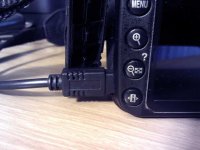Winston D. Williams
Senior Member
I am owner of of a New D5200. I like to know if I can set up for Month, Date and Year on the pictures I want.
I used to do this wirh a Soney camara. Thanka.
I used to do this wirh a Soney camara. Thanka.
Would he be meaning for the date time etc to appear ON the picture itself?
Don,
Thank you for the information. It’s very interesting and probably this what I was searching for and is better.
Do you have the name of the App?. Hope the owner’s manual covers more of the same.
EXIF stands for [h=1]Exchangeable image file format[/h]
There is all sorts of information that is encoded with every photo you shoot. It tells you what camera you are using, what lens is on it and what the setting on your camera was when you shot the the photo. it tells you the time, date and if you have an attachment for the camera it can tell you where you were when you shot it (GPS). If you do travel a lot and use a iPhone there is a APP that you can download and run when you are shooting and at the end of the day take a picture of a Q Code the app generates and download to the same folder as your photos and run a quick program on the computer and it will add the GPS to each photo then.
Anyway there are many ways to know when you shot something even if you don't print it on the photo.
Don,
Thank you for the information. It’s very interesting and probably this what I was searching for and is better.
Do you have the name of the App?. Hope the owner’s manual covers more of the same.
It's called geotagging. Basically, you embed the GPS coordinates of where the image was taken into the EXIF data.
It's not in the camera manual as this is all third-party stuff.
If you want to Geotag you can "synch" photos using a third party app or you can use something like the Solmeta N3, which is hardware based, and about $200. Still, that's a good $100 cheaper than Nikon wants for their version, the GP-1A.
I've seen the Solmeta in action, though, and it doth rock. Could NOT be simpler to use, stunningly accurate and locked on almost as fast as my Garmin handheld.
.....
Don,
Thank you for the information. It’s very interesting and probably this what I was searching for and is better.
Do you have the name of the App?. Hope the owner’s manual covers more of the same.
Don,
Thank you for the information. It’s very interesting and probably this what I was searching for and is better.
Do you have the name of the App?. Hope the owner’s manual covers more of the same.
Bob,
Thanks for the information. I am doing some research on GP-1 GPS, like the one you said you have. I read the reviews on Amazon.com on this, it’s like 50/50 some says it works great .And others seem not happy about.
What is your experience on GP-1. I am travelling to Far-East in mid-January, it’s like once in life time trip for me. I probably end up in buying one anyway.
Thanks again for all your inputs on this. This is a great forum to be in.

